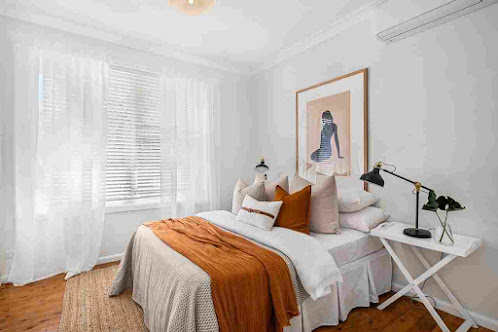Is the time ripe to transform your cherished vision of a dream home into a tangible reality? House plans play a crucial role in the process of building a house that perfectly suits your needs and preferences. In this article, we will delve into the world of house plans, exploring their significance, the key components of a good house plan, and how to choose the best one for your dream home.
 |
| Designing Your Dream Home |
Table of Contents
What are House Plans?
The Importance of House Plans
Understanding the Components of House Plans
1- Site Plan
2- Floor Plan
3- Exterior Elevations
4- Roof Plan
5- Cross-Sectional Views
6- Electrical Plan
7- Plumbing Plan
8- Interior Details
Choosing the Right House Plan
1- Assessing Your Needs
2- Budget Considerations
3- Size and Layout
4- Architectural Style
5- Energy Efficiency
6- Future Expansion
Customizing House Plans
1- Working with Architects and Designers
2- Modifications and Additions
3- Adapting for Accessibility
The Building Permit Process
1- Understanding Local Regulations
2- Submitting Your House Plans
3- Getting Approval
Building Your Dream Home
1- Hiring a Contractor
2- Materials and Construction
3- Monitoring the Progress
Frequently Asked Questions (FAQs)
1- What are the standard dimensions for a bedroom in a house plan?
2- Can I make changes to the house plan during construction?
3- How long does it take to get a building permit?
4- Are there eco-friendly house plans available?
5- What is the average cost of a custom house plan?
What are House Plans?
House plans are detailed architectural drawings that outline the layout, design, and specifications of a home. These plans serve as the blueprint for constructing the house and are essential for builders, contractors, and homeowners alike. A well-crafted house plan provides a comprehensive visual representation of the house, ensuring that all parties involved are on the same page.
The Importance of House Plans
House plans are the foundation of any successful construction project. They offer a clear vision of the final product and help prevent misunderstandings or mistakes during the building process. Moreover, having a well-thought-out house plan ensures that the house is structurally sound, functional, and aesthetically pleasing.
Understanding the Components of House Plans
1- Site Plan
The site plan is the first component of a house plan and shows the entire property's layout. It includes the house's position on the lot, driveway location, landscaping elements, and property lines.
2- Floor Plan
The floor plan is the heart of the house plan, illustrating the layout of each floor of the house. It indicates the room dimensions, wall partitions, doorways, and window placements.
3- Exterior Elevations
Exterior elevations present the house's external appearance, showing how it will look from all sides. This helps visualize the architectural style and design elements.
4- Roof Plan
The roof plan displays the house's top view, showcasing the roof's shape, slopes, and ridges. This is crucial for understanding the roof's structure and ensuring proper drainage.
5- Cross-Sectional Views
Cross-sectional views offer a cutaway look at the house, revealing the internal structure and height relationships between various elements.
6- Electrical Plan
The electrical plan outlines the electrical outlets, switches, and lighting fixtures in each room, ensuring proper electrical wiring.
7- Plumbing Plan
The plumbing plan highlights the location of sinks, toilets, showers, and other plumbing fixtures, ensuring efficient water supply and drainage.
8- Interior Details
Interior details encompass all aspects of the interior design, including cabinetry, built-in features, and decorative elements.
Choosing the Right House Plan
Selecting the perfect house plan for your needs requires careful consideration of various factors.
1- Assessing Your Needs
Before browsing through house plans, identify your requirements, such as the number of bedrooms, bathrooms, and any specific features you desire.
2- Budget Considerations
Set a realistic budget for your house construction and choose a plan that fits within your financial limits.
3- Size and Layout
Consider the size of the house and the layout that complements your lifestyle and family dynamics.
4- Architectural Style
Choose an architectural style that resonates with your personal taste and blends well with the neighborhood.
5- Energy Efficiency
Option for house plans designed with energy efficiency in mind, promoting sustainable living and lower utility bills.
6- Future Expansion
Keep in mind potential future expansions or modifications you might want to make to the house.
 |
| Designing Your Dream Home |
Customizing House Plans
Sometimes, finding the perfect house plan may require some customization.
1- Working with Architects and Designers
Collaborate with professionals to customize a house plan according to your specific preferences.
2- Modifications and Additions
Make alterations to an existing house plan to suit your unique needs better.
3- Adapting for Accessibility
Ensure that the house plan is accessible and inclusive for everyone, regardless of mobility.
The Building Permit Process
Before you start building, obtaining the necessary permits is essential.
1- Understanding Local Regulations
Take the initiative to acquaint yourself thoroughly with the specific building codes and regulations governing your locality, ensuring meticulous adherence to each requirement.
2- Submitting Your House Plans
Submit your house plans to the relevant authorities to obtain the required building permits.
3- Getting Approval
Wait for the approval of your plans before commencing construction.
Building Your Dream Home
With the house plans in hand and permits secured, it's time to start building!
1- Hiring a Contractor
Choose a reliable and experienced contractor to bring your dream home to life.
2- Materials and Construction
Select high-quality materials and closely monitor the construction process to ensure the best results.
3- Monitoring the Progress
Stay involved in the construction process and maintain clear communication with the contractor.
Conclusion
House plans are the blueprint for building the home you've always envisioned. With careful consideration and attention to detail, you can find or customize the perfect plan that meets your needs, lifestyle, and budget. Remember that building a home is a significant undertaking, so take the time to plan thoroughly and enjoy the journey of creating your dream home.
1- What are the standard dimensions for a bedroom in a house plan?
In most cases, a standard bedroom in a house plan is around 10 feet by 12 feet (3 meters by 3.6 meters). However, bedroom sizes can vary based on regional building standards and personal preferences. Larger bedrooms are common in master suites, while smaller bedrooms are suitable for guest rooms or children's rooms.
2- Can I make changes to the house plan during construction?
While it is possible to make minor adjustments during the construction process, major changes to the house plan can be complex and costly. It's best to finalize the house plan before construction begins to avoid delays and extra expenses. Consult with your contractor and architect to understand what changes can be accommodated without compromising the structural integrity.
3- How long does it take to get a building permit?
The time required to obtain a building permit can vary depending on your location and the complexity of the project. In some areas, it may take a few weeks, while in others, it could take several months. It is advisable to start the permit application process early to avoid delays in the construction timeline.
4- Are there eco-friendly house plans available?
Yes, there are plenty of eco-friendly house plans available that focus on sustainability and energy efficiency. These plans often incorporate features such as solar panels, energy-efficient appliances, proper insulation, and materials with a lower environmental impact. Choosing an eco-friendly house plan can not only help reduce your carbon footprint but also save you money on energy bills in the long run.
5- What is the average cost of a custom house plan?
The cost of a custom house plan can vary widely depending on the complexity of the design, the size of the house, and the experience of the architect or designer. On average, a custom house plan can cost anywhere from $2,000 to $10,000 or more. It's essential to obtain quotes from multiple professionals and discuss your budget and requirements beforehand to find the best fit for your needs.
In conclusion, house plans are the cornerstone of building your dream home. They provide the necessary guidance and specifications for the construction process, ensuring that the final result meets your expectations. By carefully considering your needs, budget, and style preferences, you can select or customize a house plan that transforms your vision into a comfortable and beautiful reality. Remember to secure the required building permits and work closely with experienced professionals to make the journey of building your dream home a smooth and successful one.
Whether you desire a cozy cottage or a modern mansion, the right house plan sets the stage for the perfect dwelling that you and your family will cherish for years to come. Happy house hunting and happy building!
Additional Features for Your Dream Home
1- Smart Home Technology
Consider integrating smart home technology into your house plan. Smart home features such as automated lighting, thermostat control, security systems, and voice-activated assistants can add convenience and energy efficiency to your home.
2- Outdoor Living Spaces
Embrace the beauty of nature by including outdoor living spaces in your house plan. Design a spacious patio, deck, or even a screened-in porch where you can relax, entertain guests, and enjoy the outdoors.
3- Energy-Efficient Windows and Doors
Option for energy-efficient windows and doors to reduce energy consumption and maintain comfortable indoor temperatures. Double or triple-pane windows with Low-E coatings and properly insulated doors can significantly improve your home's energy efficiency.
4- Storage Solutions
Plan for ample storage throughout your home. Consider walk-in closets, built-in shelving, and cabinets to keep your living spaces clutter-free and organized.
5- Home Office or Study Area
If you work from home or need a quiet space for studying, designate a home office or study area in your house plan. Ensure it is well-lit and secluded from distractions to enhance productivity.
6- Green Spaces and Landscaping
Incorporate green spaces and landscaping into your house plan. A beautiful garden or a small backyard oasis can add a sense of tranquility and beauty to your home.
7- Multi-Functional Rooms
Designate multi-functional rooms in your house plan that can adapt to your changing needs. For example, a guest room with a pull-out sofa can also serve as a home gym or hobby space when not in use by visitors.
8- Energy-Efficient Appliances
Option for cutting-edge, energy-efficient appliances to adorn your kitchen and laundry room, fostering both sustainability and cost savings in the long run.
9- Home Theater or Entertainment Room
If you're a movie enthusiast or love hosting game nights, consider incorporating a home theater or entertainment room in your house plan. Create a cozy space with comfortable seating and top-notch audiovisual equipment.
10- Green Building Materials
Explore the use of green building materials in your house plan. Materials like bamboo flooring, recycled glass countertops, and reclaimed wood not only look stylish but also contribute to a sustainable and eco-friendly home.
With these additional features, your dream home can truly be a reflection of your lifestyle, preferences, and values. Remember to work closely with your architect or designer to incorporate these elements seamlessly into your house plan. Investing time and effort in creating a well-thought-out house plan will undoubtedly pay off as you enjoy living in your custom-designed dream home.
Creating a house plan is an exciting step towards building a space that suits your unique needs and desires. From the layout and architectural style to the energy-efficient features and outdoor spaces, every detail matters in shaping the perfect home for you and your family. So, get ready to embark on this fulfilling journey and turn your dream home into a reality!



%20(25)_5_3.jpeg)

No comments:
Post a Comment